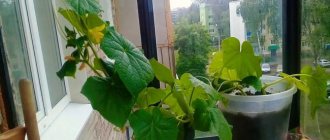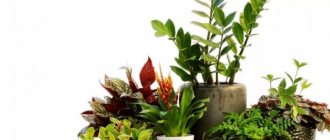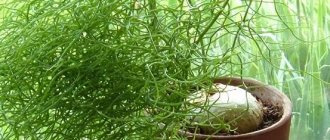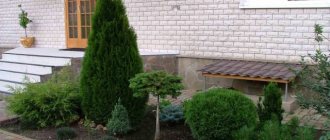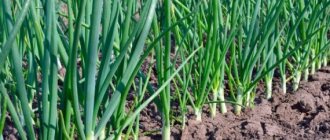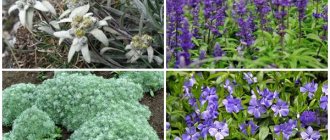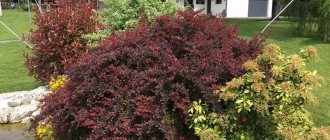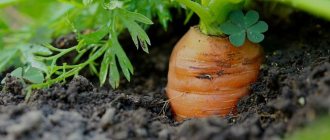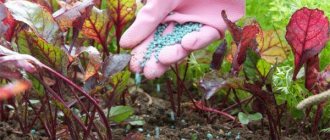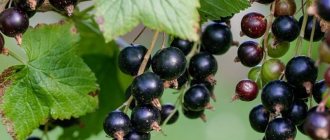- September 3, 2018
- Increased fertility
- Oksana Sergeeva
It is human nature to crave beauty. I want to transform the world around me, create comfort and ennoble the space. For this purpose, flowers are planted in the garden and at home. Houseplants are living beings that selflessly take care of people. They give aesthetic pleasure, bring warmth and joy to the world around them, and purify the air. First of all, you need to take care of feeding your home flowers. To thank flowers for their care, you should carefully care for them.
When is feeding required?
Plants do not speak, but silently hint that they urgently need help. Some signs indicate the need for fertilizer:
- long absence of flowering;
- leaves fall off when touched;
- leaves change color, turn pale and become lifeless;
- the stems grow quickly, but they are thin and weak;
- Sometimes spots appear on the leaves.
If the necessary substances are absent for a long time, this will lead to a decrease in plant immunity, the risk of fungal and infectious diseases will increase, and flowering may not occur.
Proper application of fertilizers for indoor flowers
Most plants are fed from about March/April until the end of August.
- Find out exactly how often and in what quantity you should feed certain plants.
- When applying fertilizers, follow the recommendations for the use of fertilizers contained on the package.
- Make sure that the fertilizer solution does not get on the leaves. If this does happen to a plant with dense foliage, then it needs to be washed well in the shower. Otherwise, spots will appear on the leaves.
- It is recommended to apply fertilizers only to damp soil and under no circumstances to completely dry soil. Otherwise, due to the high concentration of chemical compounds, root burns are possible.
- Sick plants should not be encouraged to grow by feeding. First of all, they need strength to recover.
- Newly transplanted plants do not need feeding for the first six weeks as there is an adequate supply of nutrients in the fresh soil.
Feeding indoor plants is not a difficult task, but it cannot be neglected.
Not enough fertilizer! If a plant suffers from a lack of nutrients, it looks sick. The surest signs of a lack of batteries are the following:
- Slow growth
- Weakened stems
- Few flowers
- Lightened leaves, especially the lower ones
- Dropping lower leaves
What to do: immediately feed with mineral fertilizer and from the next day feed with the recommended frequency. The plant will recover gradually over time.
Lots of fertilizer! If one of the following symptoms is observed, it may be a sign of excess fertilizer:
- Drooping or deformed leaves
- Brown spots and burnt edges of leaves
- White crust - deposition of calcium salts on pots and substrate surfaces
What to do: replant or wash. To wash, place the pot in the sink, preferably with 3 pebbles, so that water can flow freely from the hole in the bottom of the pot. Run water through the ground for half an hour. The stream should not be strong. Subsequently, the soil is allowed to dry out somewhat again, after which begin normal regular watering and fertilizing.
Plants that are sensitive to high salt concentrations, such as ferns, azaleas, primroses, and orchids, should always be fed very little at a time.
Iron deficiency! Sometimes you can see indoor plants that suffer from a lack of a very specific element, such as iron. In this case, they suffer from jaundice and chlorosis. Citrus fruits, brunfelsias, and hydrangeas (Hydrangea macrophylla) are especially sensitive to iron deficiency.
You can recognize iron deficiency by the leaves: they turn light yellow, only the veins of the leaves, even the thinnest ones, remain green. This phenomenon is caused by an increased content of lime (calcium salts) in irrigation water.
What to do: general feeding will not help here; you need to replenish your iron deficiency. Buy iron sulfate and dissolve 0.5 g in 1 liter of water. Water the plant with 50 ml of this solution. This procedure should be repeated several times at intervals of 5-7 days, but use a fresh solution for each treatment. A rusty nail stuck into a pot of soil under a plant does not help in such cases. Perhaps someone has had success using an iron tablet.
Traditional feeding methods
Stores offer a large selection of fertilizers for flowers; many of them can be used at home. But there are proven folk methods with which you can feed the plants yourself. Perhaps the result of their application will not come as quickly as after using purchased fertilizers, but it is no less effective.
Using traditional methods, they choose products that are in every home. Among them:
- eggshell;
- sugar;
- yeast;
- onion and garlic peels;
- coffee grounds;
- drunk tea;
- banana peel.
When choosing what to feed house flowers at home, you need to know: the basis of folk feeding options is the biochemical reaction between the substances that make up the soil and products. Beneficial microorganisms multiply, accelerating the production of elements necessary for flowers, as well as the production of important macro- and microelements.
Fertilizing is a simple but vital procedure
The need to constantly replenish the loss of nutrients by adding additional fertilizers to the soil is directly related to the characteristics of growing any plants in containers and flower pots. Unlike crops that grow directly in open ground, indoor plants require additional nutrients throughout their active development. In fact, whether indoor pets receive the necessary elements depends only on the owners. And all responsibility for “supplying” the plants also lies with them.
Fertilizing should be considered not as stimulating flowering, development, or improving the decorative characteristics of plants, but rather as maintaining vital access to nutrients for each plant - potassium, phosphorus, nitrogen, microelements and other compounds. We should not forget that almost every type of plant has its own preferences in terms of soil nutrition and the composition of fertilizers.
When looking for the ideal approach to fertilizing, it is necessary to remember that the best guarantee of success is the “golden mean” rule. Feeding should be neither excessive nor insufficient. We must try to create the most stable conditions possible for the development of indoor pets, avoiding any extremes. Excessive fertilizing, as in any other care parameter, will not benefit any crop. Regular, systematic care, built in accordance with the development cycle and characteristics of the plant - this is the recipe for ideal fertilizing.
Foliar feeding of plants
Food products for plant nutrition
When wondering what to feed your house flowers at home, you can look into the kitchen. Many common products are complete natural fertilizers. These include:
- Sugar, which is an affordable flower food at home. When it decomposes, fructose and glucose are formed - an important substance for the growth and development of plants, especially useful during their flowering. To prepare the fertilizer, 1 tbsp. l. sugar is dissolved in 500 ml of water. Flowers are watered with a sweet solution. For a chemical reaction to occur and the fertilizer to work, carbon dioxide is needed. In autumn and winter there is little of it in a room with central heating. Therefore, feeding is more suitable for spring and summer. It is not recommended to apply it under succulents.
- Eggshells are a complete source of calcium needed by flowers. Shells are collected throughout the year. It is washed, dried and crushed into powder: it is in this form that the shell can completely release calcium and sulfur to the flowers. The powder is used in dry or dissolved form. It should not be used frequently: a high concentration of fertilizer reduces the acidity level of the soil and can lead to chlorosis and fungal diseases.
- Onion and garlic peels contain not only useful elements, but also phytoncides that protect plants from diseases. An infusion of the husks is used to spray flowers. To prepare it, pour 1.5 handfuls of raw materials with warm water and boil for up to 10 minutes. Cool, filter and then use. Top dressing is prepared no more than 2 times every 30 days. But not all flowers like this “treat”. Do not spray cyclamens, geraniums and violets with this solution.
- Tea leaves are used as mulch (in dried form), to create drainage and as a liquid fertilizer. Domestic fern species are especially responsive to it. Sometimes feeding is enhanced by adding sugar.
- Coffee grounds will make the soil soft and fluffy and saturate the flowers with nitrogen. To feed, take a handful of dried grounds, carefully spread it over the surface of the soil with a fork and water it. Coffee grounds increase the acidity of the soil. Not all plants respond well to an acidic environment. Gladioli, roses, lilies and azaleas like it. Evergreens do well in such conditions.
- Yeast is the most active fertilizer for home flowers. At home, plants will develop vigorously from it. Contains B vitamins, phytohormones and other beneficial substances. To prepare pressed yeast feeding, take 15 g per 1.5 liters of warm water, and dry yeast - 1 g per the same volume of water. Place 1 table in the first sugar solution. l., in the second - 1 teaspoon. The solutions are infused for 3 hours, then 5 glasses of water are added to 1 glass of infusion, stirred and fed to the flowers.
- Banana peel is an excellent choice for those who decide how to feed their home flowers. Contains many useful substances, including potassium, phosphorus, magnesium. To highlight them, different methods are used. Sometimes the skin is cut into small pieces and placed in a container so as to fill it by a third. Pour water so that it covers the contents of the jar and leave until fermentation begins. When the fermentation process is activated, the infusion is drained, diluted with water and watered over the flowers. Fertilizing is very effective, but has a drawback - an unpleasant odor. More often the peel is used differently. When preparing the soil for planting, layer the soil and crushed banana peels into the pots. The fertilizing will begin to take effect later than the liquid one, but it will also saturate the plant with the necessary nutrients. Often the banana skin is cut, dried and ground into powder. The powder is placed into a hole dug around the flower, sprinkled with earth and watered. Potassium, which the infusion is rich in, will make the color of the leaves bright and give them shine.
- Citrus fruit peel. To prepare the fertilizer, cut the peels of citrus fruits, place them in a container and pour boiling water over them. After a day, the infusion is drained; one part of it is diluted with three parts of water and the flowers are watered. Some gardeners mix the infusion with banana peel infusion and/or sugar. Citrus infusion contains citric acid, nitrogen, potassium, magnesium and calcium in the necessary quantities for the growth and health of flowers. Fertilizing repels many pests of indoor plants. The use of fertilizer depends on the season: in autumn and winter it is used once, and in summer and spring - twice a month. Do not water orchids and cacti with the solution.
The beneficial substances found in the listed products contribute to the normal development of plants, accelerate their growth and do not cause undesirable consequences.
Homemade fertilizers available in every kitchen
Instead of vitamins for all plants, you can use products that are available in the kitchen of any housewife.
Glucose or regular sugar
Glucose is involved in carbohydrate metabolism; its derivative is contained in the membrane of each cell and, accordingly, promotes plant growth. It is also deposited in the roots in the form of starch, and this element is involved in the process of photosynthesis (respiration) of the plant.
Glucose compensates for the insufficient amount of light, therefore it is most relevant in the autumn-winter period.
Sugar feeding is a very common type of fortification because it is very accessible. For vitaminization, use 1 tsp. per one liter of water. Reviews about fertilizing the soil with sugar are always the most positive. Weakened or overdried plants can even recover.
Aquarium water
If there are fish in the house, then the water where they swim is an excellent fertilizer in the fall or spring (growth period). It contains algae and vital elements of fish. These elements promote plant growth.
Therefore, when cleaning the aquarium or partially replacing the water, you should not neglect such a valuable product.
The only negative is that frequent use can cause the soil to become covered with a green coating.
Yeast
To enhance plant growth, you can use regular baker's yeast. The content of minerals and vitamins in this substance is quite diverse. Most often used in spring.
Just don’t overdo it, otherwise you’ll have to break through the ceiling to your neighbors for the free growth of ficus or palm trees.
Along with plant growth, it can increase the growth of harmful bacteria, so it is recommended only for healthy flowers.
Leftover freshly ground coffee or coffee grounds
It is used not only for fortune telling, but also for fertilization, and is especially effective for rose blooms. For azaleas, it is better to use the acidic environment of fresh coffee powder.
It contains minerals and carbohydrates, which are necessary to ensure that the home flower garden never ceases to delight with its bright colors.
The smell of coffee is very pleasant to people, but can repel pests and pets (cats and dogs). You can watch the video in detail about the benefits of coffee for indoor plants.
Banana peel
Its action is similar to coffee grounds. It is rich in microelements. But it is used not only for flowering, but also to enrich the soil of home plantings. To do this, the skins are crushed and mixed with soil.
The proportions are approximately 1 to 5 (one banana for every five parts of land).
Citrus peels
Lemon, tangerine, and orange are frequent guests in homes in winter. Tons of skins are thrown away. And there, in addition to vitamin C, it contains a huge amount of useful minerals. A solution is prepared for use. The skins are poured with boiling water and left to steep.
The strained infusion is diluted with water. The fertilizer is ready for use. 1 part of the peel is poured with three parts of water.
Ash
The secret of using ash is known to all gardeners. It is used as protection against pests (flies, viral diseases). But it also contains minerals. Moreover, they are soluble, which improves their absorption. Just sprinkle the sprinkled surface with water.
Pharmacy products serving as supplementary food
When choosing what to feed your home flowers, you can go to the pharmacy. Some remedies that help people regain health are used to feed house plants. The list of pharmaceutical products useful for flowers includes:
- Iodine is an element that activates nitrogen and potassium compounds in the soil. Increases the duration of flowering of plants. Geranium reacts especially well to it. To feed, 0.1 mg of iodine is mixed with 1 liter of water. It is difficult to measure the exact amount of iodine at home, so it is better to buy fertilizer and dilute it according to the instructions on the package. The solution is poured along the edge of the pot, being careful not to touch the leaves and roots of the plant.
- Hydrogen peroxide accelerates the growth and flowering of plants; has a detrimental effect on fungal and infectious diseases. Strengthens the root system and prevents its rotting. Saturates the soil with oxygen. Two tbsp. l. peroxide is poured into a liter of water, mixed and watered the plants. The solution is similar in properties to rainwater, which flowers love. The product will help cope with stem and root rotting due to excessive watering. If you add a little sugar to the solution, it can be used to spray flowers. Foliar feeding will restore the flowers to a healthy appearance and activate growth. If you add 3 drops of iodine to the mixture, this will protect the plant from pests.
- Potassium permanganate (potassium permanganate) is a reliable source of potassium and manganese needed for flowers, as well as an insecticide against some insects. A pale pink solution is used to water the plants so as not to burn the roots.
- Acetylsalicylic acid (aspirin) is an effective means for feeding weakened flowers and increasing their immunity. To prepare a solution for spraying or watering, add 1 aspirin tablet to a liter of water. Sometimes, to enhance the effect, add 3 drops of eucalyptus oil. Use no more than once every 3 months.
- Succinic acid improves the composition of the soil, increases the chlorophyll content in the stem and leaves. Used in the form of a solution to enhance the growth of domestic flowers, as well as for rooting seedlings and pre-sowing treatment of seeds. To prepare the liquid, 1 gram of succinic acid powder (tablet) is dissolved in a liter of water. Used for irrigation and as a spray liquid. After illness or replanting, flowers experience stress. Succinic acid will help deal with it. Begonia, haworthia, citrus fruits, and arrowroot respond especially well to feeding. Use no more than 2 times a year.
- Castor oil. Just 2 drops of oil added to the soil have a good effect on the budding of the plant. The product promotes beautiful flowering.
- Ammonia contains a high concentration of nitrogen - more than 80%. This makes it very useful for flowers. Does not lead to the accumulation of nitrates. To prepare the solution, 1 teaspoon. l. ammonia is diluted in 3 liters of water. Water the flowers right to the root. To feed decorative deciduous crops, the solution is used throughout the entire growth period - until autumn, once a week. Geraniums and homemade lemons are watered all year round. When using top dressing, other nitrogen fertilizers are not used.
- B vitamins began to be used in agriculture in the late 1950s. All B vitamins are beneficial for indoor flowers.
- Vitamin B1, or thiamine, improves flower growth and prolongs their viability. To water and spray plants, dissolve 1 ml of vitamin in a liter of lukewarm water. Combines well with other fertilizers and can be used frequently. Does not accumulate in the soil.
- Vitamin B3, or niacin, nicotinamide, has hormonal properties. Aims the plant to produce new flowers. Helps a withered flower to revive. The solution is watered and sprayed once every 14 days.
- Vitamin B6, or pyridoxine, is a good immunostimulant, used before and after the use of fungicides and insecticides. A solution for spraying and watering is prepared from 1 ml of vitamin and 1 liter of settled water, often with the addition of 1 ml of vitamin B3.
- Vitamin B12, or cobalamin, is involved in the photosynthesis of chlorophyll and saturates plant cells with oxygen and cobalt. In summer they are used less often than at other times of the year.
Plants are living beings. They actively respond to fertilizers contained in simple pharmaceutical preparations that do not contain aggressive chemical compounds. Such fertilizers are combined with other fertilizers.
Feeding indoor plants with folk remedies at home
With your own hands, you can prepare nutrient mixtures and solutions for spraying from simple pharmaceutical preparations, food waste, and yeast. Let's consider several options for folk remedies for home flowers and plants.
Yeast
Yeast is an indispensable tool for phytostimulation and feeding of domestic vegetation.
Important: 100 g of dry compressed yeast contains 12 g of protein; protein is a source of nitrogen compounds.
Benefits of baker's yeast for indoor flowers:
- maintaining the physiological and aesthetic state of ornamental plants by stimulating photosynthesis and respiration;
- yeast, getting into the soil, continues to function, has a beneficial effect on the growth and development of the root system, and blocks the vital activity of pathogenic microorganisms;
- the active elements of yeast synthesize biologically active substances in the process of vital activity;
- The fungal base of yeast contains a huge amount of protein (protein), mineral elements and amino acids.
Additional Nutrient Sources
When thinking about how to feed house flowers, at home they pay attention to fertilizers used in gardening in general. Some substances used to feed garden flowers are also used in indoor floriculture.
Aloe juice
The substance is useful for weakened plants. Improves flowering quality and stimulates growth. Use aloe juice that is over 5 years old. The cut leaves are placed in a plastic bag and put in the refrigerator for 2 weeks. Then they are crushed and the juice is squeezed out. The feeding solution is prepared from 2.5 tsp. juice and 2 liters of settled water. Use up to 3 times a week.
Wood ash
Natural source of potassium, zinc, calcium, magnesium, sulfur and iron. Place 2 tables per 1 liter of water. l. ash. Stir and leave for 3 days. Use for watering and spraying flowers 2 times a month. Ash is well received by cyclamens, begonias, fuchsias and geraniums. Experts prohibit the use of cigarette ash for feeding due to the high content of carcinogenic substances.
Aquarium water
Having a neutral pH level, it is suitable for all plants. Contains nutrients that promote flower development. Used from early March to mid-July, when active flower growth occurs, buds are set, and new leaves appear. At this time, alternate watering with aquarium water with regular clean, settled water. With frequent use of fertilizer, algae may begin to develop in the soil, and the soil will turn green and sour.
Humus
Not suitable as a fertilizer for all plants. Large ficuses, dieffenbachias, monstera and palm trees respond well to it. Humus from leaves mixed with soil is especially valued. Fertilizer loosens and softens the substrate, improves its composition.
Infusion of medicinal herbs
Sometimes other plants come to the aid of flowers. When choosing what to feed home flowers, many people prefer herbal infusions. They are usually made from different herbs: nettle, yarrow, celandine. The herbs are taken in equal parts, filled with water, covered and infused for 7 days. Add 5 parts of water to 1 part of the solution and water the plants. Sometimes they infuse only nettle. The fertilizer contains a lot of phosphorus, nitrogen and calcium. Plants that are watered with this solution 2 times a month become strong and strong. The soil becomes lighter and its composition improves.
Urea (urea)
An irreplaceable source of nitrogen. Stimulates flower growth, improves flowering quality. Use no more than 2 times a year so that excessive stimulation of growth does not cause depletion of the plant. For spraying, 200 g of urea is dissolved in 5 liters of water. You can sprinkle some dry granules on the ground. When watering, the granules will dissolve and begin to act.
Pigeon or quail droppings
Concentrated fertilizer 0.3 tsp. the droppings are carefully mixed with the soil, then watered. Stimulates flower growth and promotes bud setting.
Some gardeners use diluted manure to feed home flowers. The fertilizer contains nutrients in a concentrated state and is not suitable for all plants. It should be used only when you are completely sure that the fertilizing will not harm the flowers. You should be especially careful with fresh manure.
When and how to apply homemade fertilizers for indoor flowers
First you need to understand the general rules of how and when to apply flower food.
When to feed plants
If your plant has become elongated, the stems have become thin, if growth has stopped or slowed down, the leaves have turned pale, light spots have appeared on them, the plant refuses to bloom, then most likely it does not have enough nutrition.
But there is no need to bring the flowers to such a terrible state; they need to be fed regularly.
Already in March, when the sun begins to peep through the windows more and more often and the flowers begin to grow, you should start feeding them once every two weeks. And continue feeding in this mode until October.
Fertilizing is applied both during growth and during flowering.
From October to February, plants usually enter a dormant period; they, like bears, go into hibernation and do not need additional nutrition. The exception is those that bloom in winter. Winter-flowering ones can be fed occasionally, but not more than once a month.
Although specialist flower growers still do not recommend doing this in the dark season from November to December.
How to apply fertilizer correctly
Important! Under no circumstances should fertilizing be applied to dry soil, as this can harm the plant and burn its roots.
First, we water the flowers, and after they have quenched their thirst (the day after watering), we feed them.
Flower food is applied both dry and diluted in water.
Dry products are scattered over the surface of the ground, then the soil needs to be loosened and lightly watered.
With fertilizing diluted with water, water the plant around the entire bush, preferably closer to the edge of the pot. There is no need to pour, just a little fertilizer is required. Be sure to use only pre-settled water, and not from the tap, at room temperature.
Sometimes fertilizing is also used in the form of spraying.
Fertilizers from kitchen waste: benefit or harm
Sometimes, thinking about how to feed home flowers to bloom, housewives use the juice of defrosted meat and fish, potato broth, and water after washing cereals. But these types of fertilizers are controversial. Some micro- and macroelements contained in these products are retained in small quantities in water and juice. But their concentration is so low that it does not affect the development of plants. Many lovers of home floriculture believe that such fertilizing is not only useless, but can also cause soil rot and the development of pathogenic microflora.
How to properly fertilize plants
A change in appearance is not always associated with flower disease or pest damage. Sometimes this is caused by a deficiency or excess of some nutrients.
- Young azaleas often have leaves that turn yellow; only the veins on them remain green. This often occurs due to watering with hard tap water containing a lot of calcium. When choosing a fertilizer, in this case you should pay attention to products containing iron.
- Sometimes the plant does not bloom for a long time or the budding time is delayed. In this case, mineral fertilizers containing phosphorus are preferred.
- When the lower leaves turn pale and yellow, this is a clear sign of nitrogen deficiency. A good fertilizer for home flowers at home is a complex fertilizer containing nitrogen.
When taking care of plant nutrition, you need to remember that fertilizing is applied in the evening, when the flower is able to fully perceive the necessary elements. Fertilizers are applied to the moist soil (at first, the flower is watered a little with settled water, and after a few hours liquid fertilizer is added); Liquid fertilizer will work faster than granular fertilizer.
How to feed potted plants
Today, there is no shortage of fertilizers that nourish the soil and potted plants. In specialized flower departments and shops you can purchase:
- ready-made organic concentrates;
- organomineral mixtures;
- growth stimulants for seedlings and seeds;
- mineral fertilizers for any flowers;
- universal fertilizers, complex supplements with microelements and vitamins.
Fertilizers are selected according to the needs of a particular type of home flower. For example, flowering plants require a completely different set of nutrients than cacti or decorative foliage species.
Types of house plants:
- cacti and succulents;
- conifers;
- citrus fruits (kumquats, lemons, oranges);
- decorative deciduous;
- beautifully flowering.
Features of feeding domestic flowers and preferences for exotics:
- for flowers with abundant aerial parts or large leaves, nitrogen fertilizing is needed;
- for flowering plants, first of all, potassium and magnesium are needed;
- cacti and succulents, even in a complex diet, consume more phosphorus;
- It is not recommended to use organic additives for cacti, succulents, bulbous and tuberous plants, and gerberas;
- flowers of the Cycad family (Cycas, Cycads), on the contrary, absorb organic matter better; rotted horse or cow manure is diluted in water in a ratio of 1 tbsp. l. organic mixture per 1 liter of water;
- variegated flowers are fed carefully; from an excess of nutrients, the beautiful pattern is “washed off”, the leaf blade becomes completely green.
General rules
Flower growers recommend adhering to the general rules for applying fertilizers for ornamental plants:
- after transplantation, flowers are not fed for at least 1.5-2 months;
- it is important to follow the diet - any fertilizer is applied once every 2-3 weeks;
- in autumn, nutrition is reduced to a minimum for most plants preparing for hibernation;
- in winter , as a rule, mineral and organic fertilizers are not required for plants, additional nutrition causes activation of growth processes, and the natural development cycle is disrupted;
- you should not skip starting spring feedings , starting from the end of February; the flowers have rested over the winter, new strength and additional nutrition are needed for growth and development, the formation of buds;
- summer fertilizing is applied to maintain nutritional balance, long flowering, resistance to heat and lack of air humidity;
- any drug is added in a precise dosage , preparation of solutions “by eye”, experimental combinations of tank mixtures are strictly prohibited; an excess of elements is fraught with irreversible consequences;
- a sick or infected plant is immediately sent to quarantine , rapid infection of all flowers is possible;
- for sick specimens affected by insects or infections, priority is given to medical and health procedures (sanitary pruning, replanting, substrate replacement, treatment with fungicides, insecticides); Fertilize only healthy plants;
- nutrient solutions are added to the moist substrate evenly along the edge of the container; after watering or showering, the plant should be dried in a shaded place; Spraying is carried out in the early morning or after sunset.
When to feed plants
There are no trifles in caring for flowers. It is important to know not only what to feed house flowers at home, you need to understand when to do it correctly. Fertilizing is applied during the growth and flowering period.
In March, indoor plants sense the arrival of spring. Flowers, like all living organisms, sense changes in nature and are themselves ready to actively change. At this time, they begin to fertilize more often: 2 times a month. This regime should continue until October. To decide how to feed your home flower in the spring using folk remedies, you need to remember: at this time of year, plants begin to grow vigorously. Yeast, sugar, remaining caffeine-containing substances - coffee grounds and drunken tea - can help them with this. In winter, when the flowers go dormant, it is better not to eat them.
Do flowers like sugar?
Flower sugar is a source of glucose, which is involved in the formation of complex organic compounds and respiratory function. This substance is an energy source for plants.
To assimilate glucose, one condition must be met - a sufficient amount of carbon dioxide. There is not enough of it in the air, the only way out is to multiply bacteria in the soil so that they release CO2 during their life processes. You can do it in two ways:
- buy a biostimulator Baikal EM-1 and water the soil, after a week fertilize with sugar;
- prepare the soil in the fall by adding organic matter - microorganisms will multiply over the winter, but it is necessary to maintain an optimal level of humidity in the pot so that the bacteria do not die and the roots of the flower do not rot.
Dilute water with sugar for flowers in the proportion of 1 tablespoon per half liter of liquid. There is another way - it is simpler: pour half a teaspoon of sugar onto the surface of the soil and water it.
This type of feeding is not recommended frequently. Once a month is enough for a large flower and once every two months for small ones. In winter, sugar is not needed - only in spring and summer during the period of active growth and flowering.
When you don't need to fertilize
Plants need to be fed on time. But you shouldn’t get too carried away and forcefully feed them, wondering what to feed them. House flowers at home usually get tired of active growth in the cold, dark season. They slow down their growth and slowly hibernate. In this case, the question may arise: how to feed your home flower in winter? It depends on the type of plant.
Usually, at this time, flowers should be left alone, unless they are winter-flowering species, which experts recommend fertilizing no more than once every 30 days. In winter, guzmania, cyclamen, Japanese camellia, and orchids delight with their flowering. When choosing what to feed your home flower in winter at home, you need to remember:
- there is no need to feed plants just bought in a store: when growing them, they add a lot of microelements, which take time to absorb;
- Do not fertilize newly transplanted plants: the soil contains the elements necessary for comfortable development; when replanting, the roots can be damaged, and fresh fertilizing can aggravate the injury;
- We must not forget about the “taste preferences of flowers”: you should not give flowers that love acidic soil fertilizers containing calcium, which enriches it with alkali; on the contrary, those flowers that value alkaline soil should not oxidize it.
Sometimes biologists recommend completely abandoning fertilizing in winter, so as not to once again disturb the plants in pursuit of lush flowering. Intensive feedings that stimulate rapid growth and abundant budding can lead to exhaustion of green pets.
How to understand that a flower needs fertilizer?
The appearance of indoor flowers is an indicator of health and normal vegetative development. An excess or lack of light, moisture, and nutrients directly affects the quantity and quality of green above-ground mass, leaf size, bud formation, ovary, annual growth, and flowering.
External signs
The lack of minerals in the soil is determined by external signs:
- the flower has stopped developing, does not grow, the leaf blade becomes smaller, dries, withered foliage is light in color - there are few nitrogen compounds ;
- the edges of the leaves turn yellow, the leaves fall out of season, young shoots are stunted in growth, the stems become thinner; dried leaves have a dark (black) color - phosphorus deficiency ;
- from a lack of potassium and zinc , the leaves turn yellow, punctures appear on the plate; with potassium deficiency , the leaves become dull, a bluish or bronze tint appears, the edges of the leaves turn brown; brown spotting is possible, the edges curl, the leaf blade becomes wrinkled;
- with calcium deficiency , young leaves become bent, the edges curl upward, a brown border appears along the very edge, the apical buds and root shoots die off, and the root begins to branch heavily;
- a lack of magnesium provokes chlorosis of the leaves, the edge and interveinal space of the leaf plate turns yellow or red, the tissues gradually die, the veins remain green, the edges and tips bend and wrinkle; First, the lower leaves are affected, then the upper ones;
- with boron deficiency , the growth point is affected, root shoots suffer, buds die, the stem becomes bent, side stems grow profusely, leaves turn pale and curl; flowering is delayed or stops (buds and flowers fall off);
- from a lack of copper, young leaves lose turgor, droop, then fall off, the edges turn white (chlorosis), the plate becomes deformed, the flower bushes and stops growing;
- iron deficiency causes leaf chlorosis; the upper leaves turn pale or yellow, the tissue between the veins turns white, gradually whitish stripes appear over the entire surface of the leaf;
- a deficiency of manganese appears on young leaves, interveinal chlorosis first affects the base of the leaf blade, the surface of the leaf gradually turns yellowish-gray, while the veins remain green, visually the leaf becomes variegated; chlorotic tissues die, spots of various sizes and colors appear.
Causes
In nature, each plant adapts to its natural living conditions, climate, and is a participant in the cycle of substances in nature. Soil bacteria, earthworms, and insects process the soil and nutrients become available. The plant world receives mineral fertilizers in full naturally.
At home, potted crops are excluded from the cycle, and natural soil processes cease over time. Flowers absorb only those elements that are introduced artificially.
In addition, if the plant lives in a pot or tub, the amount of soil for it is naturally limited.
A year after planting, even the most well-filled and nutritious soil is depleted, and the flowers begin to “starve.” Ignoring seasonal mandatory fertilizing and individual preferences of indoor flowers leads to a weakening of phytoimmunity; plants are affected by infections and viruses.
Florists note that it is in autumn that indoor plants suffer from stress , temperature and air humidity change, and daylight hours are reduced. The leaves turn yellow, become covered with spots, and harmful insects seek shelter for the winter. Lack of attention and improper care leads to the death of the flower.
Reviews from flower growers about plant nutrition
Many flower growers, communicating on the Internet on forums, note that it is better to reduce or completely eliminate fertilizing, which is common in garden floriculture, in relation to home flowers. We are talking about humus, manure and herbal infusion. They contain concentrated nutrients and are easy to overfeed house plants with. In addition, they have an extremely unpleasant odor, which is difficult to cope with at home.
Flower growers speak positively about the influence of B vitamins on the development of all indoor flowers, noting that violets, roses, and gloxinias especially like them. Regulars of flower forums praise hydrogen peroxide and iodine as fertilizers: the drugs not only replenish the deficiency of useful elements, but also protect plants from pests.
Flowers are living organisms that bring warmth and harmony to the house, creating a cozy atmosphere, emphasizing the originality of the interior. Sometimes it is not easy for them in apartment conditions, but they steadfastly endure the torment, only occasionally silently hinting at inconvenience. The duty of a caring housewife is to recognize in time the reason why the appearance of the plant is changing and to respond to it in time. To do this, sometimes it is enough to make adjustments to his diet.
Myths about fertilizing
Many gardeners use coffee grounds and tea leaves for feeding. Are they good for plants? The question is controversial. It is believed that the remains of the tea leaves only loosen the soil, but have practically no benefit. Coffee grounds can increase the acidity of the soil, which is dangerous for flowering plants, such as chrysanthemums.
Another food for home flowers is eggshells. It is believed that calcium will help the plant develop properly. But many houseplants do not need calcium. Egg fertilizer will only act as a leavening agent and drainage agent.
Water from meat is often used by flower growers. Many believe that it helps saturate plants with protein. In fact, once the meat water is absorbed into the soil, it will create an unpleasant odor, which may attract flies.
